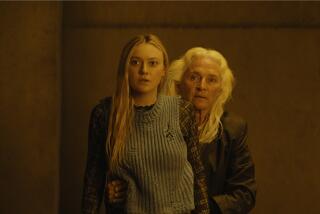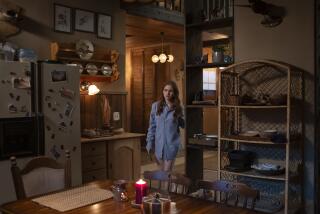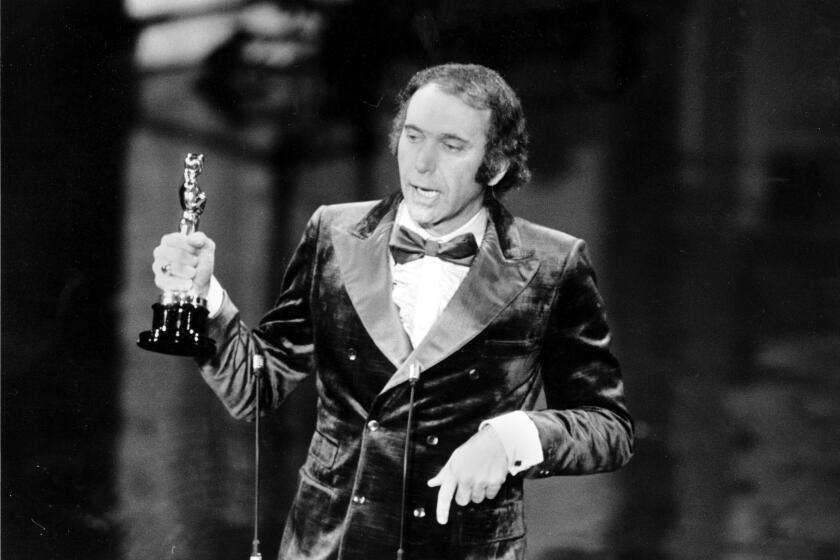Director Ari Aster creates the charming, seductive — and deadly — grip of ‘Midsommar’
Filmmakers talk about world-building, that soup-to-nuts conception of a cinematic realm that applies to everything from the galactic spectacle of a “Star Wars” spinoff to the bespoke eccentricities of a Wes Anderson comedy. That obsessive attention to imaginative detail is one of the deep pleasures of the summer release “Midsommar,” writer-director Ari Aster’s darkly comic saga set amid a blissed-out, yet sinister, pagan celebration at a remote Swedish commune.
The film follows the more overt horror of “Hereditary,” Aster’s 2018 feature debut, with the story of American graduate students lured to the fictional village of Hårga (not to be confused with an actual Harga, north of Stockholm) for a once-every-90-years ritual. Among them is Florence Pugh’s Dani, who finds shocking catharsis for the sudden loss of her family and the fiery resolution to a toxic relationship.
The scenario’s heady embrace of the uncanny leans hard into the hallucinogenic — mysterious potions abound — packed with endless subtle details that illuminate Dani’s strange journey and give audiences as much of a dizzying sensory experience as a narrative one.
“It was very important to me that it be as immersive as possible and feel a bit like a trip,” Aster said, “a trip that curdles and continues to curdle into madness.”
`‘Midsommar’ depicts one wacky vacation on the Swedish coast. Its cockeyed and freaky and gory.
A good part of achieving that, the director said, was “to push and hold things and linger and allow shots to breathe as long as they can before it gets self-conscious.”
With cinematographer Pawel Pogorzelski, a creative partner since their days in film school, Aster sourced lenses from Panavision that were detuned to allow for the particular demands of the shoot, most of it conducted in the exterior broad daylight that is essential to the film’s design. “This is a film that demanded a certain amount of control,” Aster said, “and you lose a lot of control immediately when you start shooting outside, especially when the entire film is being shot that way.”
But “Midsommar” also creates intrigue through its mythological elements, which were cultivated from the original concept by producer Patrik Andersson and Martin Karlqvist. Aster and the film’s production designer, Henrik Svensson, toured Hälsingland, which inspired “Midsommar’s” setting (although the film’s village was created from scratch about 30 minutes outside of Budapest). The central Swedish province is dotted by centuries-old farmhouses whose interiors provided the inspiration for the disturbing wall murals that foreshadow various plot turns in the film. Runes proliferate across the film, as does an alphabet created for the production, each resonant with meanings peculiar to character and story.
“Every one of those hieroglyphs that might seem strange were sourceless,” Aster said. “We have our own definitions for them. If you go into the archives wherever they are right now, you’ll be able to find dense character lists that tie them to specific runes and sometimes kind of a broad history, but they were all given histories to draw from and work with.”
The attention to linguistic minutiae extended beyond the primary cast to each of some 80 background actors, many of them familiar to Swedish TV and movie audiences, who learned a catalog of original songs, a sign language and the idiosyncratic breath utterances — reminiscent, perhaps, of something from a Björk album. Aster enlisted choreographer Anna Vnuk to coach the actors in movements that further embellished the commune’s personality.
“Life is treated as a dance even when they aren’t dancing,” Aster explained. “Beyond that, throughout the film, you’ll see them gesturing in ways that might not make a whole lot of sense to the casual viewer, but there was a very, very dense vocabulary given to every actor as far as body language.”
Jessika Kenney, an adventurous vocal artist whose collaborations range from the experimental metal band Sunn O))) to the jazz and contemporary music violist Eyvind Kang, composed songs for the village rituals, drawing on her expertise in devotional music.
All of these facets make the world of the Hårga, while decidedly odd to American eyes, somehow charming and seductive, even if fatally so for the guests. “Not that I think you could even classify this place as a cult, [but] most films about cults neglect the one thing they should attend to first,” Aster said, “which is give some sense of why anybody would want to join. For me, that was the first thing.”
Films such as “Us,” “Lighthouse” and “Joker” may not be strictly horror, but they are genre and their dark, disturbing natures could see awards love.
Whether Academy Award voters will fall under the spell is a tough question, given the difficulty films lobbed into the genre category have at Oscar time. But the film can contend in multiple categories.
“There are a lot of people who just avoid the genre,” Aster said. “Many horror films are alienating and draw a pretty strong line in the sand, as far as who’s invited in and who’s held out. I hope that this is a film that maybe is more inviting than others. At the same time, I recognize that in many ways this is an alienating, strange film.”
More to Read
Only good movies
Get the Indie Focus newsletter, Mark Olsen's weekly guide to the world of cinema.
You may occasionally receive promotional content from the Los Angeles Times.







